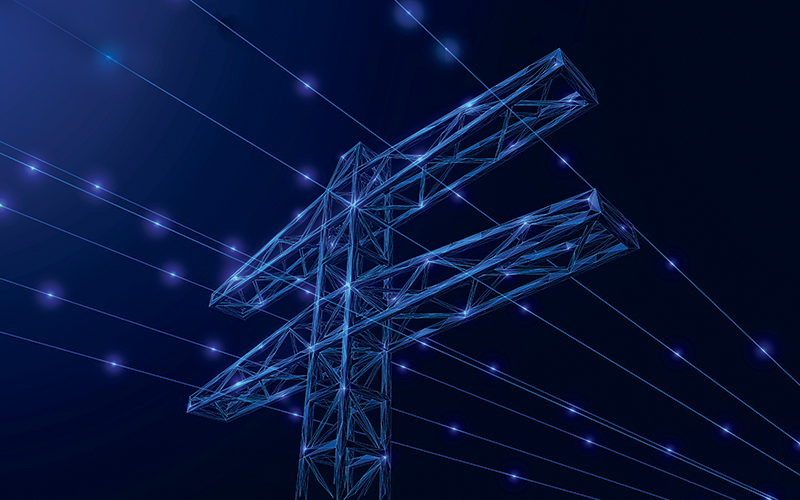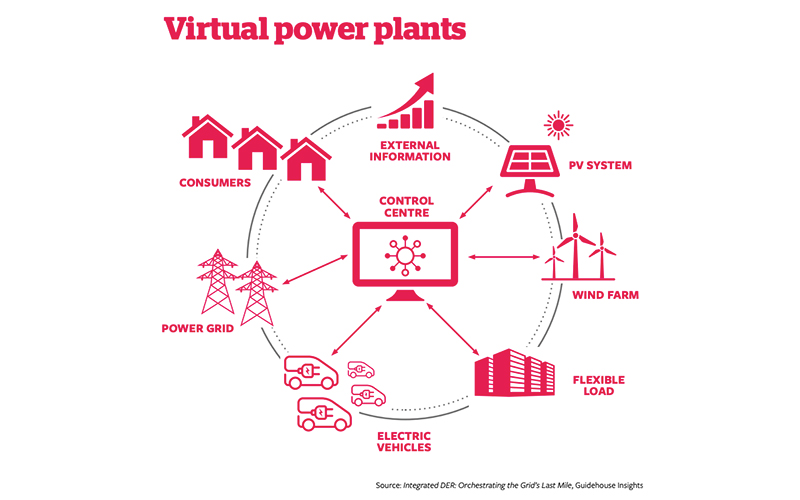The energy transition needs virtual power plants
Virtual power plants will help the world meet its net-zero emissions targets, says Dan Power at Guidehouse Insights

In the wake of wider distributed energy resources (DER) deployment, increased renewable energy capacity, and grid software advances, virtual power plants (VPPs) have gained traction in the energy industry. With the electric grid shifting from a centralised generation model powered by fossil fuels to one reliant on distributed, variable renewable energy sources, VPPs will be essential as grid operators and utilities look to maintain grid balance.
The primary goal of a VPP is to achieve the greatest profit for DER owners while maintaining the proper balance of electricity on the grid at the lowest economic and environmental cost. When deployed and orchestrated at scale, VPPs can provide the same services as a 24/7 traditional power plant.
Gaining global traction
VPPs are still early in their development and adoption phase around the world, with a small number of countries accounting for most deployed or planned VPP projects to date. VPPs can bring generation, load, and energy storage resources together to serve the grid, making them a versatile solution for all regions of the world.
Europe is expected to lead in installed VPP capacity during the next decade, in part because of widespread interest in energy flexibility markets. North America and the Asia Pacific regions, however, are expected to see faster average growth each year. In North America, FERC Order No. 2222 in the US requires regional grid operators to develop new market structures to further incorporate DER participation. In the Asia Pacific region, Australia is pairing its large number of installed rooftop solar systems with behind-the-meter batteries to create VPPs. Government support at all levels and third-party vendor incentives in the country are major drivers for VPP development.
VPPs make renewable resources dispatchable
Historically, sudden or large-magnitude changes in demand have been managed using fossil fuel power plants because they can be quickly turned on or off to balance supply with demand. However, renewable sources do not offer that same luxury and often generate the most during periods of low demand, so alternative methods must be used for balancing.
Energy storage can mitigate these mismatches to an extent, but as renewables increase their presence on the grid, advanced software systems such as VPPs will be necessary. VPPs can orchestrate hundreds or thousands of utility scale and customer-sited resources to provide constant and optimised grid service to customers using zero-carbon sources, regardless of weather conditions.
The growth of digitalisation in the power sector is changing the traditional supply and demand relationship. Internet-connected appliances and devices, smart meters, thermostats, plugs, electric vehicle chargers and energy management systems have given end users greater insight into when and how much energy is used. Those same advancements have given grid operators more control over how and when electric demand is met.
Although electrifying more applications will increase electricity demand, digitalisation allows demand for certain loads to be filled at varying times throughout the day, optimising resource utilisation while reducing grid strain without affecting the end user. On top of enabling orchestration and monitoring of DER in a VPP, digitalisation also allows for more seamless customer enrollment and payment for participating in a VPP.

Certain building equipment, such as water heaters, thermostats and pool pumps, can be used as load shifting or shedding resources in VPPs, in addition to more conventional DER such as rooftop solar PV systems or energy storage. For these to work in concert as part of a VPP, they must be outfitted with the appropriate technology to accept and use two-way communication signals so that they can be controlled accordingly throughout the day.
Building equipment and DER manufacturers, along with DER integrators, should work with VPP platform providers to implement standards to ensure their hardware can be enrolled in a VPP. Deploying a wider range of connected building equipment and DER that is flexibility-ready increases the share of resources available for grid balancing services.
To increase VPP capacity, the number of assets ready for aggregation must also increase. Customers may acquire DER on their own because of declining prices, a desire for backup power due to increasingly frequent extreme weather events, or other factors. However, DER vendors and integrators should develop financing options that expand the pool of customers who can acquire relevant assets (for example assisting with upfront costs, leasing options, and rebates). They should also streamline and simplify the education and enrollment process for VPPs to encourage more customers to participate.
Europe is expected to lead in installed VPP capacity during the next decade, in part because of widespread interest in energy flexibility markets
The power grid is shifting in response to decarbonisation efforts and VPPs are a critical part of that shift. While technology providers will play a crucial part in VPP advancement, regulators and policymakers in every region should start updating their market frameworks to facilitate DER adoption and participation. The transition from fossil fuels to renewable sources is one of the largest undertakings in modern history, and it will require stakeholders on both sides of the meter to work together more closely than ever before.
By Dan Power, Research Analyst – Virtual Power Plants, Guidehouse Insights
Image credit | iStock






Follow us
Advertise
Free e-Newsletter